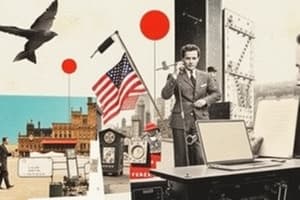Podcast
Questions and Answers
What defines a business model?
What defines a business model?
- The operational structure of a company
- How a business generates or intends to generate revenue (correct)
- The number of employees in a company
- The range of products offered by a company
What is the primary goal of a profit-seeking business?
What is the primary goal of a profit-seeking business?
- To generate revenue and maximize profits (correct)
- To employ as many people as possible
- To operate with the least costs possible
- To maximize customer satisfaction
Which of the following best describes the term 'profit'?
Which of the following best describes the term 'profit'?
- Revenue generated from selling goods and services
- Total revenue before expenses
- Money remaining after all costs have been deducted from revenue (correct)
- The amount invested in business operations
Which of the following is NOT a reason businesses accept risks?
Which of the following is NOT a reason businesses accept risks?
What is a significant characteristic of a digital enterprise?
What is a significant characteristic of a digital enterprise?
In cost leadership strategies, what is the expected relationship between price and quantity?
In cost leadership strategies, what is the expected relationship between price and quantity?
Which concept best represents the definition of 'barriers to entry'?
Which concept best represents the definition of 'barriers to entry'?
What does a two-sided business model typically involve?
What does a two-sided business model typically involve?
Flashcards are hidden until you start studying
Study Notes
Business Definition
- A business is a profit-seeking entity that provides goods and services to satisfy customer needs.
- Revenue is the money a company earns from selling products or services.
- A Business Model explains how a company generates revenue by focusing on price, quality and cost.
- Profit is the remaining revenue after all business costs are deducted.
Competitive Advantage
- Businesses strive to have a competitive advantage that makes them stand out to customers.
Business Risks and Rewards
- All businesses take risks in pursuit of profit.
- Risk is the potential for loss or failure.
- Reward is the potential for profit or success.
Business Categories
- Businesses can be categorized by:
- Ownership Structure: Sole proprietorship, partnership, corporation, etc.
- Industry: Retail, manufacturing, finance, etc.
- Size: Small, medium, large
- Geography: Local, regional, national, international
Benefits and Drawbacks of Businesses
- Businesses can benefit society by:
- Creating jobs
- Producing goods and services
- Contributing to economic growth
- However, businesses can also have negative impacts, such as:
- Environmental pollution
- Exploitation of workers
- Harmful products
Business Environment
- Businesses operate in a dynamic environment with opportunities and constraints.
- Opportunities are favorable external factors that can help a business succeed.
- Constraints are unfavorable external factors that can challenge a business.
- Barriers to entry are resources or capabilities required to compete in a market.
Functional Areas of Business
- Businesses typically have six major functional areas:
- Marketing: Identifies and meets customer needs.
- Finance: Manages the company's money.
- Operations: Produces the company's goods or services.
- Human Resources: Manages the company's employees.
- Information Technology: Develops and maintains the company's information systems.
- Legal: Ensures the company complies with all laws and regulations.
Business Professions
- There are many important professions in business, including:
- Accountant
- Marketing Manager
- Finance Analyst
- Human Resources Specialist
- Operations Manager
- Software Developer
- Lawyer
Professionalism
- Qualities of a professional include:
- Excellence: Striving to be the best.
- Dependability: Being reliable and trustworthy.
- Teamwork: Collaborating effectively with others.
- Respect: Treating others with courtesy and consideration.
- Ethical behavior: Following a code of conduct.
Digital Enterprise
- A digital enterprise uses digital systems for value creation.
- Digital transformation is the process of adopting digital technologies.
Organizational Structure
- An organization is a group of people with shared goals and a defined structure.
- Maslow's Hierarchy of Needs is a theory that describes the levels of needs that motivate people.
Two-Sided Business Model
- A two-sided business model provides value to two distinct groups.
- Example: Instagram is free to users but profits by selling data to advertisers.
Revenue Formula and Cost Leadership Strategies
- Revenue is calculated as price multiplied by quantity sold, minus costs.
- Cost leadership strategies focus on offering lower prices.
- Low price, high quantity: Costco, Ryanair, fast fashion
- High price, low quantity: Luxury goods
Studying That Suits You
Use AI to generate personalized quizzes and flashcards to suit your learning preferences.


